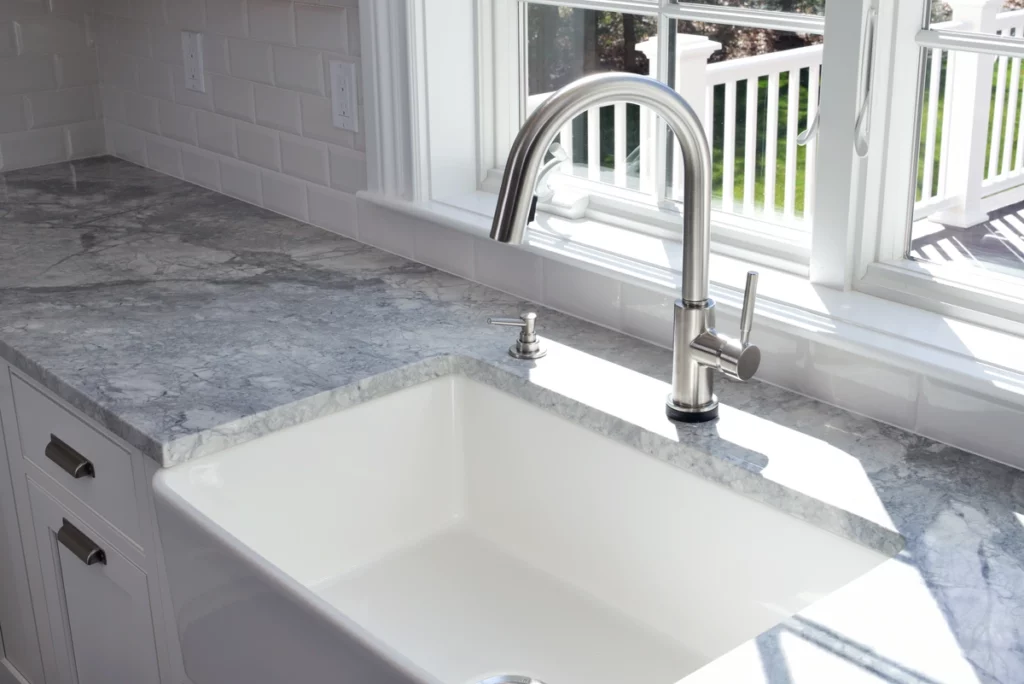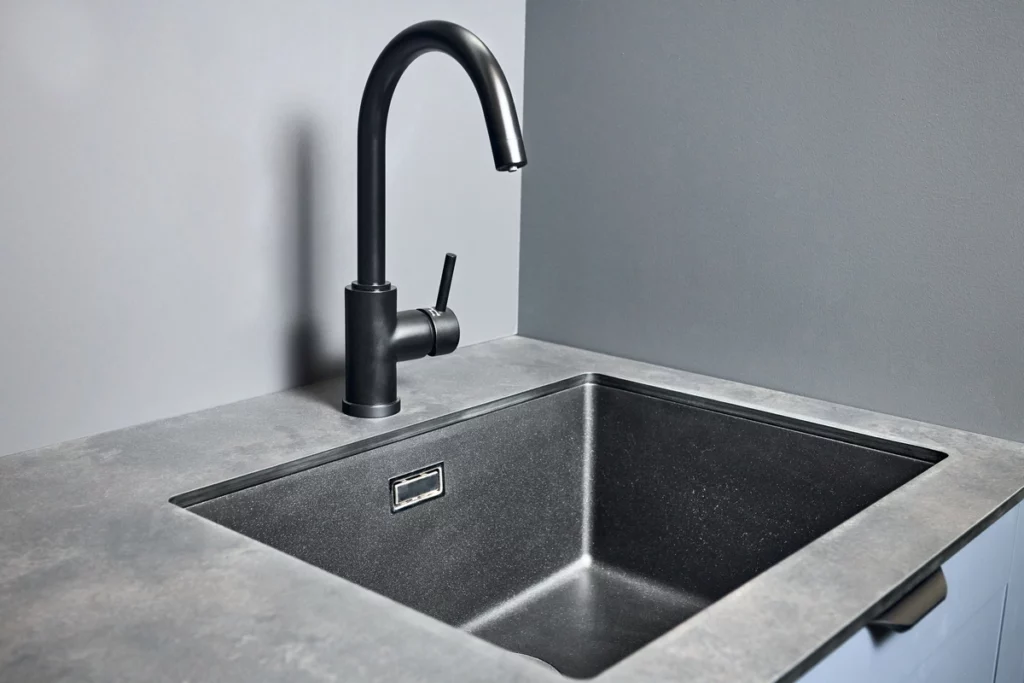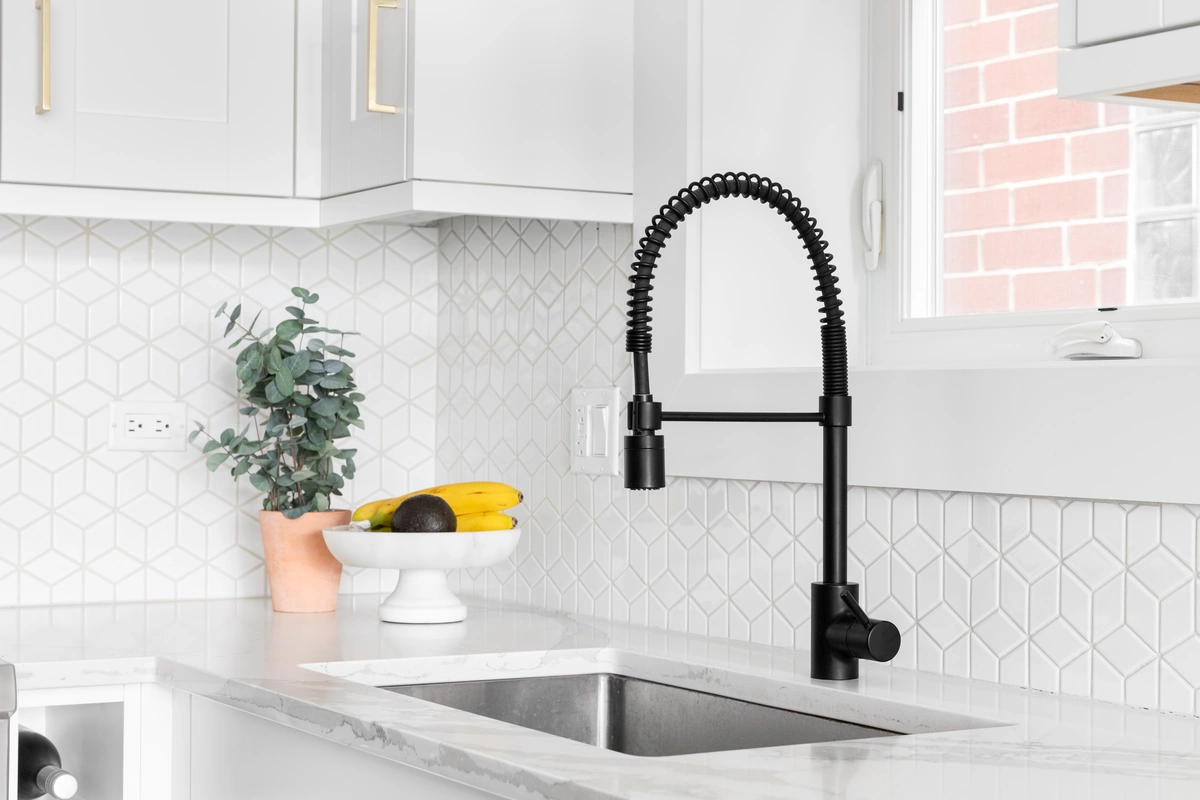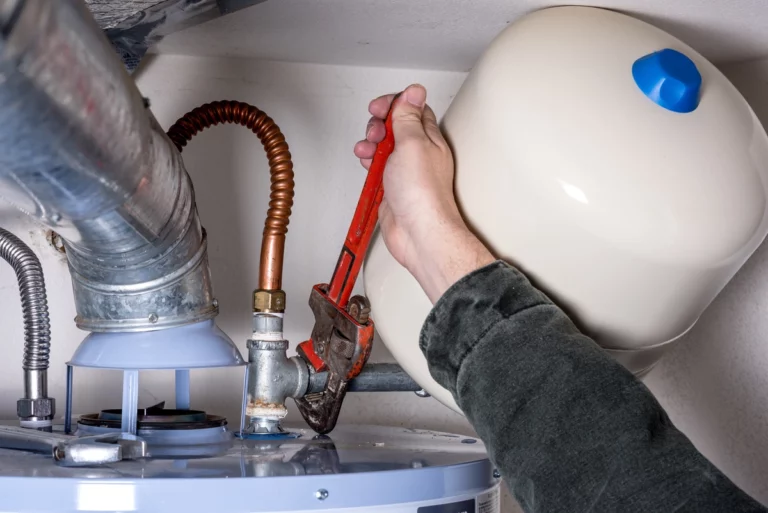When it comes to selecting the right sink for your kitchen or bathroom, the choice of materials can play a significant role in both aesthetics and functionality. With a plethora of options available, it’s important to weigh the pros and cons of each material to make an informed decision that suits your needs and preferences. In this comprehensive guide, we’ll explore the best sink materials along with their:
- Unique characteristics
- Styles
- Benefits
5 Best Kitchen Sink Materials

Your kitchen is one of the most high-traffic places in your home. That means that your kitchen sink is one of the most used parts of your home. Choosing wisely is important. Here are some of the most popular sink materials as well as their pros and cons to consider.
1. Stainless Steel Sinks: Sleek and Durable
Stainless steel sinks are a popular choice for both kitchens and bathrooms due to their durability, sleek appearance, and resistance to stains and corrosion. They come in various styles, including undermount, top-mount, and farmhouse. The benefits of stainless steel sinks include:
✅ Pros:
- Durability: Stainless steel sinks are built to withstand heavy use and are resistant to dents and scratches.
- Hygiene: Non-porous surface makes them easy to clean and maintain, preventing the growth of bacteria.
- Versatility: Available in different gauges and finishes to match various design preferences.
- Affordability: Stainless steel sinks are often more budget-friendly compared to other materials.
❌ Cons:
- Noise: Stainless steel can be noisy when dishes and utensils are dropped into the sink, but some sinks come with noise-reducing coatings.
- Scratches: While resistant to scratches, stainless steel sinks can still develop minor scratches over time.
2. Porcelain/Ceramic Sinks: Classic Elegance
Porcelain or ceramic sinks are known for their timeless appeal and are commonly found in traditional and vintage-style kitchens and bathrooms. These sinks are fired at high temperatures, resulting in a glossy finish that’s both elegant and easy to clean.
✅ Pros:
- Aesthetics: Porcelain sinks offer a classic and elegant look that complements a variety of design styles.
- Resistance: They are highly resistant to staining and fading, maintaining their beauty over time.
- Easy Cleaning: The smooth surface makes for easy cleaning and prevents the growth of bacteria.
❌ Cons:
- Fragility: Porcelain sinks can chip or crack if heavy objects are dropped on them.
- Maintenance: While resistant to staining, they might still show scratches and can require more delicate care.
3. Composite Granite Sinks: Blend of Beauty and Durability

Composite granite sinks are engineered using a combination of crushed granite stone and resin. This results in a sink material that combines the durability of natural stone with the versatility of modern engineering.
✅ Pros:
- Aesthetics: Composite granite sinks offer a natural stone look in various colors and styles.
- Durability: They are resistant to scratches, stains, and heat, making them a reliable choice for busy kitchens.
- Noise Reduction: Some composite sinks have sound-absorbing properties to minimize noise.
❌ Cons:
- Weight: Composite granite sinks can be heavier, requiring proper support during installation.
- Maintenance: While durable, they might require regular cleaning to prevent water spots and maintain their appearance.
4. Fireclay Sinks: Vintage Charm with Modern Toughness
Fireclay sinks are crafted from a blend of clay and glaze, then fired at extremely high temperatures to create a sink with a smooth, durable surface. They are known for their farmhouse or apron-front style that adds a touch of rustic charm to kitchens.
✅ Pros:
- Design: Fireclay sinks offer a unique, vintage-inspired design that can be a focal point in your kitchen.
- Durability: They are resistant to chipping, staining, and scratching, making them suitable for heavy-duty use.
- Heat Resistance: Fireclay sinks can withstand high temperatures, including hot pots and pans.
❌ Cons:
- Weight: Similar to composite granite sinks, fireclay sinks are heavy and require proper installation.
- Cost: Fireclay sinks tend to be more expensive due to the craftsmanship and materials involved.
5. Copper Sinks: Rich Patina and Distinctive Character

Copper sinks are prized for their distinctive appearance that develops a unique patina over time. They add warmth and character to kitchens and bathrooms with their rich, reddish-brown hues.
✅ Pros:
- Aesthetics: Copper sinks offer a one-of-a-kind, rustic charm with a patina that evolves over time.
- Antimicrobial Properties: Copper has natural antimicrobial properties, which can help prevent the growth of bacteria.
- Durability: Copper sinks are durable and resistant to corrosion.
❌ Cons:
- Maintenance: The patina might require specific care to maintain, and acidic substances can affect the finish.
- Cost: Copper sinks are generally more expensive due to the material’s unique characteristics.
Get a Plumber’s Opinion
As plumbers, we’ve seen it all. We know the ins and outs of kitchen sinks and can help you choose one that fits your particular needs. If you are ready to upgrade your home, contact our team at Black Tie Plumbing today to get started on your sink replacement!





